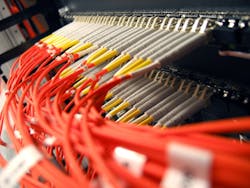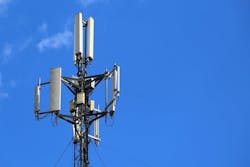How did Broadband Predictions for 2025 Turn Out?
2025 is a nice-sounding number, so naturally, predictions from years ago will be made in regard to this very year that we’re in now. That means we get the pleasure of looking back at those predictions to see which ones were met, which ones we blew right past, and which one we came up short on.
I've pointed out repeatedly how wildly off some of the predictions for IoT have been, which is an example of how technology can sometimes be overhyped. Many internet predictions from a decade or more ago focused on proliferation of wearable devices and augmented reality, and other physical interface changes to how we interact with the internet. These types of device proliferation can be slow to take hold, however. At least when compared to futuristic expectations.
And what about broadband technology, proliferation, speed, etc.?
If you're in the telecom industry, you can see how certain technologies seem to prove themselves again and again while others are slower to take hold. And, of course, infrastructure can be dependent on government policy, as we're now seeing happen in real time.
Let's take a look at some old predictions for 2025 and how they've held up.
“Fiber networks should reach 50% of homes by 2025, a new study says” – prediction made in 2019
In a study from the Fiber Broadband Association (FBA) from 2019, it was claimed that half of homes in the U.S. would have access to fiber broadband in 2025.
According the FBA, fiber now, in 2025, passes 56.5% of households in the U.S. Fiber remains the strongest type of home connection, and it's hard to see that changing anytime soon. Wireless home internet is a strong category, and cable and satellite will still provide good broadband for a lot of people, but the fiber industry has been busy building infrastructure for many years now and it has paid off.
Good accuracy on the guess, and then to surpass the prediction? I’d call that a win.
“In documents shared by the Wall Street Journal in 2017, the company predicts that Starlink could have over 40 million subscribers” – prediction made in 2017.
In 2017, the WSJ reported Starlink’s goal of achieving 40 million subscribers by 2025.
Well, it’s 2025 now. How many connections does Starlink have? About 5 million. Still a lot of subscribers, but nowhere close to 40 million.
Of course, Elon Musk tends to be very optimistic about his companies (what founder wouldn't be?). And LEO satellites are obviously a completely different type of deployment than fiber, copper, or fixed wireless, and government subsidies and various space regulations must play a role in telling this story, too.
“GSMA Intelligence forecasts that the number of 5G connections globally will reach 1.3 billion by 2025.” – prediction made in 2018
Here’s a back-in-the-day 5G prediction that was actually grounded in reality for this next generation of mobile networks.
So how did we do? According to 5G Americas, there are now 2.25 billion 5G connections worldwide. Despite how much we talk about 5G being overhyped, the industry has done a fine job getting 5G out there.
5G Americas says that 5G has expanded at a rate four times that of 4G in the same period.
“Research indicates that average users will need speeds of 150 Mbps by 2025.” – prediction made in 2020
Five years ago, it was predicted by at least one source that an “average” internet user will require 150 Mbps (presumably download speed) to do whatever it is average people do.
AllConnect wrote in March that “if you have a household of four people, you can most likely make do with a 100 Mbps plan.” Meanwhile, Tom’s Guide recommends 50 -100 Mbps to allow for multiple devices, 5k streaming, and gaming.
When you factor in remote work, the recommendations are usually a bit higher. Fully remote workers are only about 13% of workers in the U.S., however.
So, this prediction was perhaps a little off. It’s been said for a little while now that speed is becoming less important in the broadband industry.
“The most significant impacts of the Internet on people’s lives by 2025 will involve augmented reality applications.” – prediction made in 2014
An assistant professor made that prediction in a 2014 survey. They were far from the only one to think this way about augmented reality, however.
The promise of augmented reality to enhance our real-world experiences is always an appealing one, since it combines technology with real life in a way that VR doesn’t. And a lot of people like reality (the real kind).
Plus, it’s just a cool, science-fiction-like concept. Something that enhances us without any kind of implant.
But, still, I can’t recall a phenomenon like Pokemon Go happening since, well, Pokemon Go.
There are reasons that this technology isn’t “the most significant impact” of the internet just yet. According to Sozo Labs, lack of a standout application and cumbersome and expensive hardware are two reasons why it has yet to become truly mainstream.
Final thoughts
It's very hard to make predictions. And often it's not so much the essence of the prediction but the timing of it that's off.
Generative AI came as a huge surprise to a lot of people. Nothing like that had ever been presented to the public before. It wasn't until you tried ChatGPT or a similar app for yourself that saw what kind of breakthrough it truly was.
I still feel obliged to put a "but" here and say that while GenAI and LLMs are a profound leap forward, there is still a sense that there needs to be a "killer app" or at least widespread proof of ROI for it to truly live up to its (business) promises. Lots of people are using it, sure. But what's going to pay off the billions that have gone into it, as well as the resource cost?
But back to broadband. I'd say the service providers have done an excellent job following through on promises for the most part. Not only have enabled Big Tech to have the dominance they do in society in our daily lives, they've also built the infrastructure that have allowed everyone everywhere to have the speed and access, whether fixed or mobile, to invent entirely new lifestyles for themselves, hether that e working from home or being an Instagram influencer.
Fiber, 5G, and other technologies have done good thus far. Let's see where we're at in 2030, a nice round number that there are sure to be plenty of predictions for.
About the Author
Joe Gillard
Executive Editor
Joe Gillard is a media professional with over 10 years of experience writing, editing, and managing the editorial process across a spectrum of innovative industries. Joe strives to deliver the best possible editorial product by focusing on the needs of the audience, utilizing the data available, and collaborating with a talented team.




